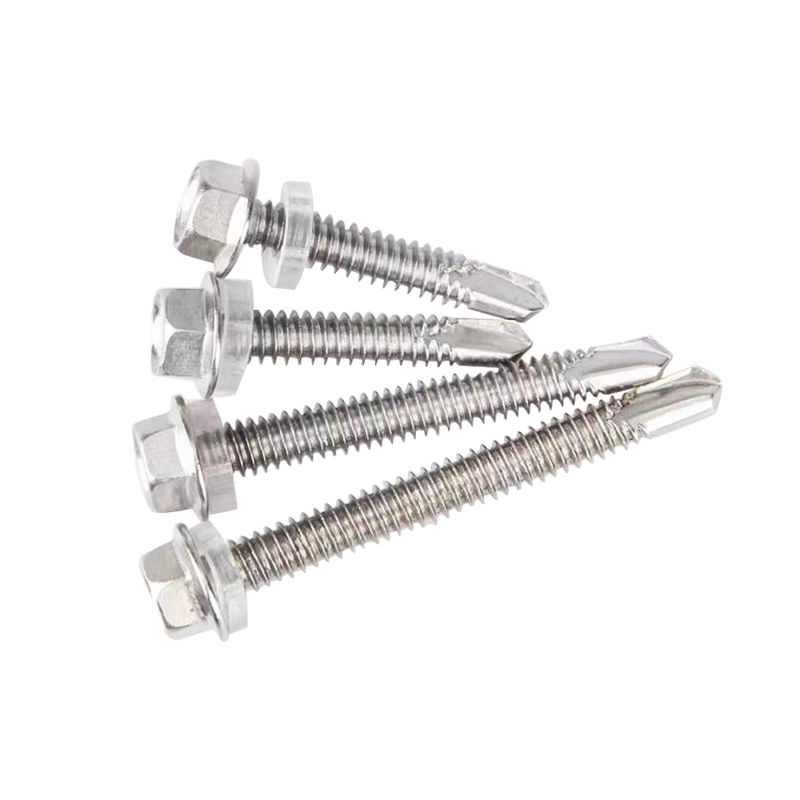What are the key mechanical properties of 410 stainless steel, and how do they affect the performance of this screw in high-stress environments?
The 410 Stainless Steel Outer Hexagonal Drill Tail Screw is a specialized fastener that offers a unique combination of mechanical strength, corrosion resistance, and practical ease of use. Made from 410 stainless steel, this screw is designed to withstand moderate exposure to environmental factors like moisture, while providing high levels of strength necessary for demanding applications. To fully understand its performance in high-stress environments, we must delve into the key mechanical properties of 410 stainless steel and how these properties influence the screw’s overall functionality.
410 stainless steel is part of the martensitic family of stainless steels, known for their high strength and hardness due to their heat-treatable nature. One of the defining features of this alloy is its ability to undergo heat treatment, which can significantly enhance its mechanical strength and hardness. After treatment, 410 stainless steel can achieve a tensile strength in the range of 450-650 MPa and a hardness between 20-40 HRC (Rockwell Hardness). These properties are crucial in applications where the screw is subjected to high stress, such as holding heavy materials in construction or metalworking. The high hardness of 410 stainless steel ensures that the screw can penetrate tough materials like metal sheets without deforming or wearing down prematurely. This is particularly important for self-drilling screws, like the one in question, as they rely on the hardness of their tip to drill efficiently without the need for pre-drilled pilot holes.

Another essential property of 410 stainless steel is its corrosion resistance, which, while not as high as austenitic stainless steels like 304 or 316, is sufficient for environments with moderate exposure to rust-inducing conditions. This means that the screw can be used in outdoor applications, where moisture and atmospheric exposure may be present, but it is not recommended for highly corrosive environments such as those involving saltwater or harsh chemicals. In a typical construction setting or in situations where the screw is exposed to occasional moisture or weather fluctuations, the 410 stainless steel screw offers a balance of corrosion resistance and structural integrity, ensuring long-lasting performance without significant maintenance requirements.
The outer hexagonal head design adds to the screw's versatility and ease of use. This head shape allows for secure gripping and turning using standard tools such as wrenches or socket drivers, ensuring that the screw can be tightened or loosened with precision, even in high-stress environments where secure fastening is critical. The flat sides of the hexagonal head prevent slippage during installation, making it easier to apply the correct amount of torque without damaging the head. In high-stress applications, this feature is especially important, as improper tightening can lead to loosening under vibration or stress, potentially compromising the integrity of the structure.
The self-drilling feature of the screw is another key element that improves its performance in demanding conditions. The drill tail is designed to pierce through materials without the need for pre-drilling, saving time and reducing labor costs in installation. This capability is particularly valuable in high-stress environments where rapid and efficient installation is required, such as on construction sites or in metal fabrications. The self-drilling point must be sufficiently hard and sharp to penetrate hard surfaces like steel beams or metal panels. Thanks to the martensitic structure of 410 stainless steel, the drill tail maintains its shape and cutting ability, even after multiple uses in tough conditions.
The key mechanical properties of 410 stainless steel—high tensile strength, hardness, and moderate corrosion resistance—make it an ideal material for the outer hexagonal drill tail screw, particularly in high-stress environments. The alloy’s ability to withstand physical stress and resist wear ensures that the screw performs reliably even under heavy loads or in materials that would otherwise be difficult to penetrate. Combined with the practical advantages of the hexagonal head and self-drilling point, these properties contribute to the screw's versatility and durability across a wide range of industrial and commercial applications, from construction to metalworking, where both strength and efficiency are critical.

 English
English  English
English 中文简体
中文简体 русский
русский














